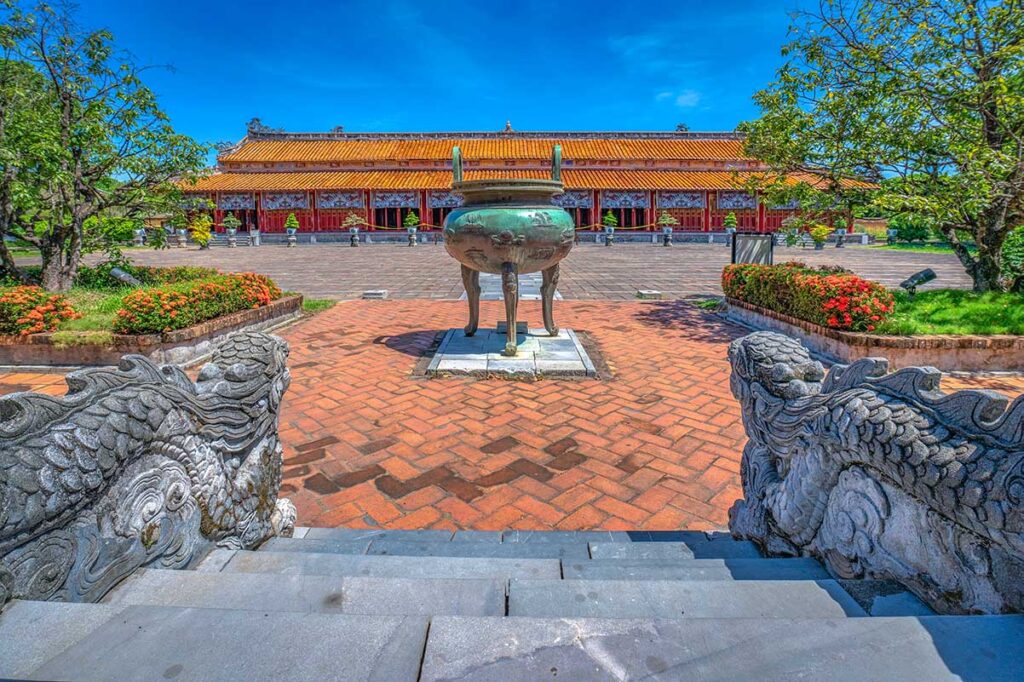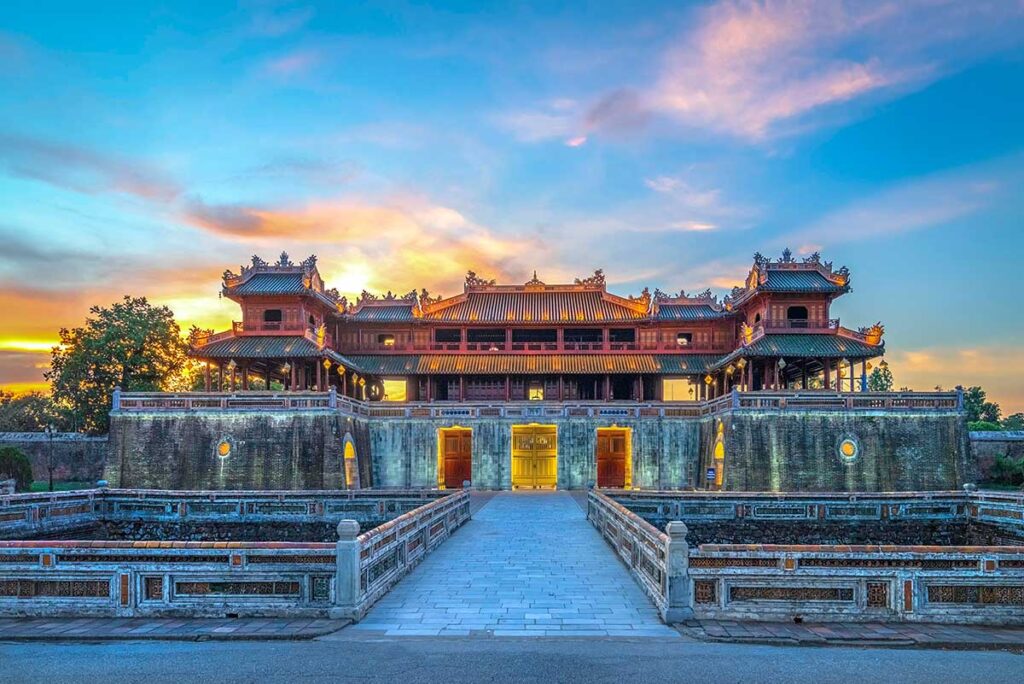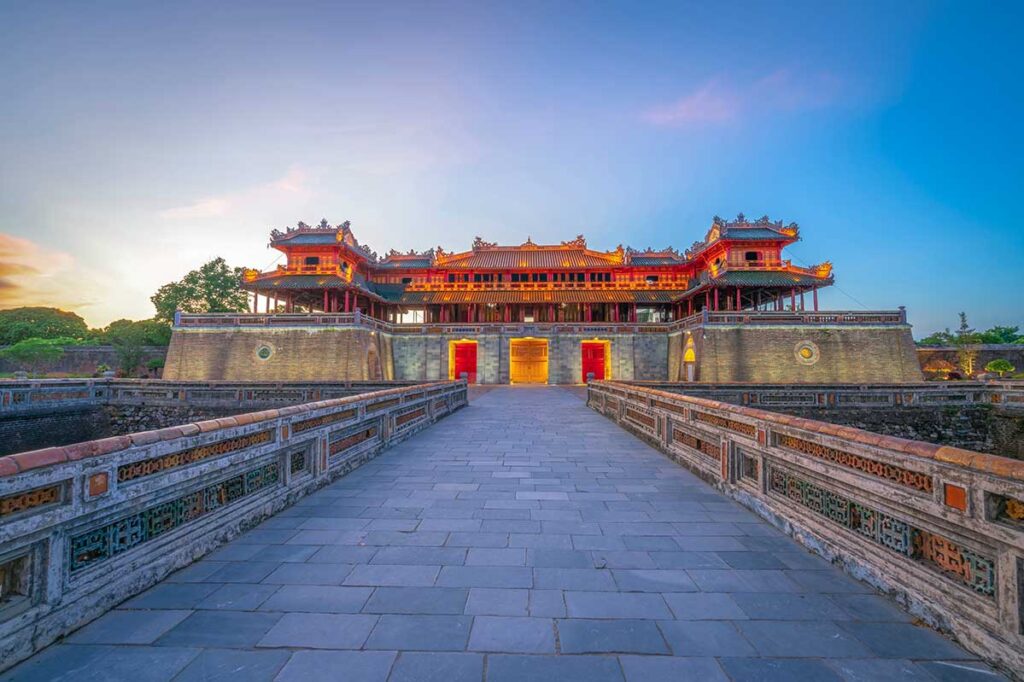What is To Mieu Temple Complex?
The To Mieu Temple Complex is a walled ceremonial area in the southwest corner of Hue Imperial City, dedicated to the worship of Nguyen emperors and their royal ancestors. It served as a key site for important ancestral rites, reflecting the Confucian tradition of honoring past rulers.
Inside the complex, you’ll find the imposing Hien Lam Pavilion, the symbolic Nine Dynastic Urns, the main temple (The To Mieu) housing imperial altars, and smaller associated shrines such as Hung To Mieu. As one of several major temple areas within the Imperial City, it offers visitors a deeper understanding of the Nguyen court’s rituals and architectural grandeur.
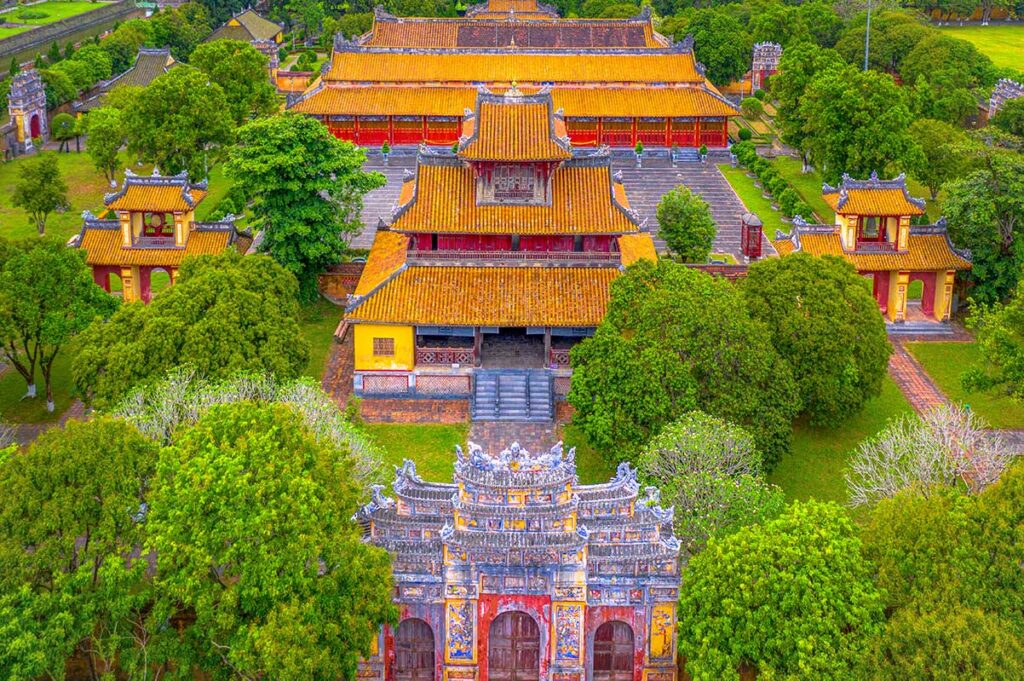
History of To Mieu Temple Complex
The To Mieu Temple Complex was commissioned by Emperor Minh Mang between 1821 and 1823 as the principal site for worshipping the emperors of the Nguyen Dynasty. In keeping with Confucian tradition, ancestral temples played a central role in royal life, serving as places where rulers honored their predecessors through elaborate ceremonies and offerings.
Over the years, the complex faced significant challenges, particularly during the First Indochina War in 1947 when parts of it, including nearby shrines, were damaged or destroyed. Restoration projects in the mid-20th century and later periods carefully rebuilt damaged structures while maintaining traditional Nguyen architectural styles.
Originally, only seven emperors who died while reigning were worshiped here, excluding those who abdicated, were deposed, or died abroad. In 1958, the altars of three patriotic kings—Ham Nghi, Thanh Thai, and Duy Tan—were added, bringing the total to ten. Today, the complex stands as part of the UNESCO-listed Hue Monuments Complex, with much of its layout and many original features preserved, allowing visitors to experience the grandeur of imperial ancestor worship much as it was nearly two centuries ago.
Layout within the Imperial City
It’s easier to make sense of the To Mieu Temple Complex if you first understand how Hue’s historic core is laid out. The city was built in layers, each with its own purpose and defenses:
- Hue Citadel – The massive outer fortress, surrounded by a wide moat and thick walls, protecting the royal capital as a whole.
- Hue Imperial City – The main inner enclosure within the Citadel, home to royal residences, administrative buildings, temples, and ceremonial spaces.
Inside the Imperial City are several important areas — the most famous is the Forbidden Purple City, but another key section is the To Mieu Temple Complex in the southwest corner.
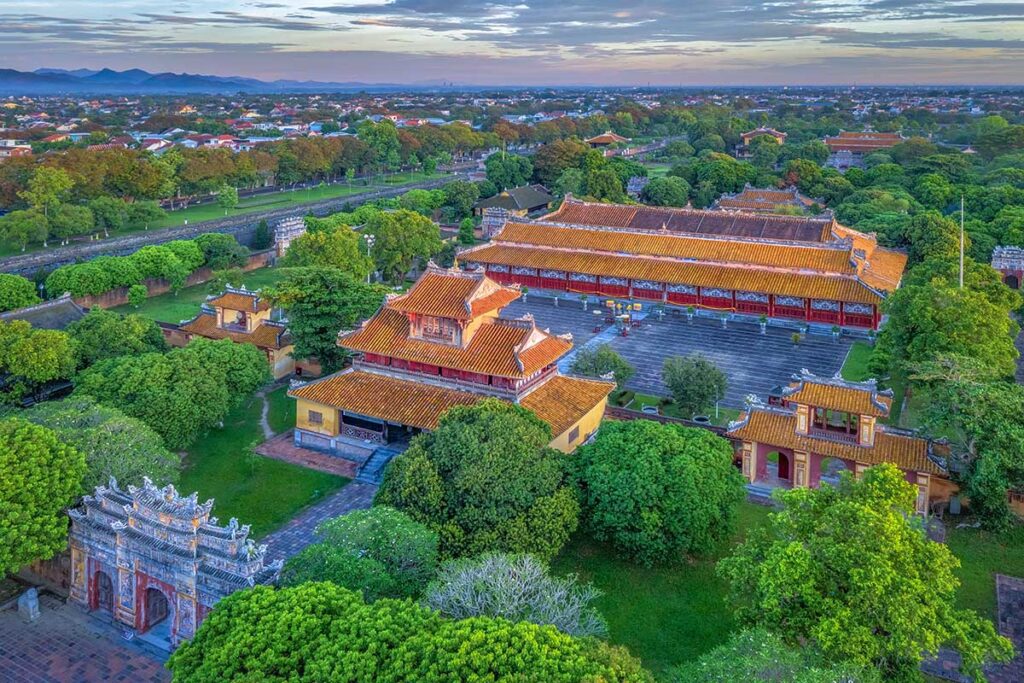
The easiest way to reach it is to enter through Ngo Mon Gate, walk straight through Thai Hoa Palace, then turn left toward the complex’s southern gate. This route follows the most direct and traditional approach, letting you see the highlights in a natural walking order.
Highlights of Visiting To Mieu Temple Complex Today
Starting from the southern gate, this route follows the same order used during imperial times, letting each part of the complex reveal itself naturally.
1. Main Gate
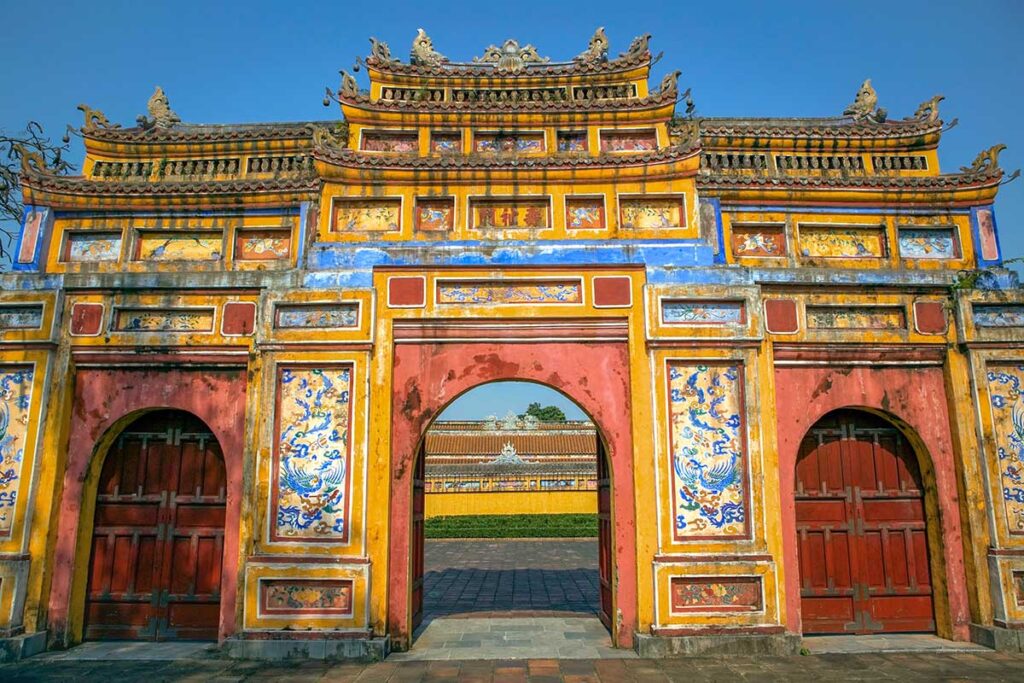
The southern entrance is built in the traditional Tam Quan (three-gate) style, symbolizing the separation between the everyday world and the sacred space within. The central arch was historically reserved for royalty, while attendants and officials entered through the smaller side arches. Its tiled roof, wooden beams, and decorative motifs set the tone for the solemn, ceremonial character of the complex.
2. Hien Lam Pavilion
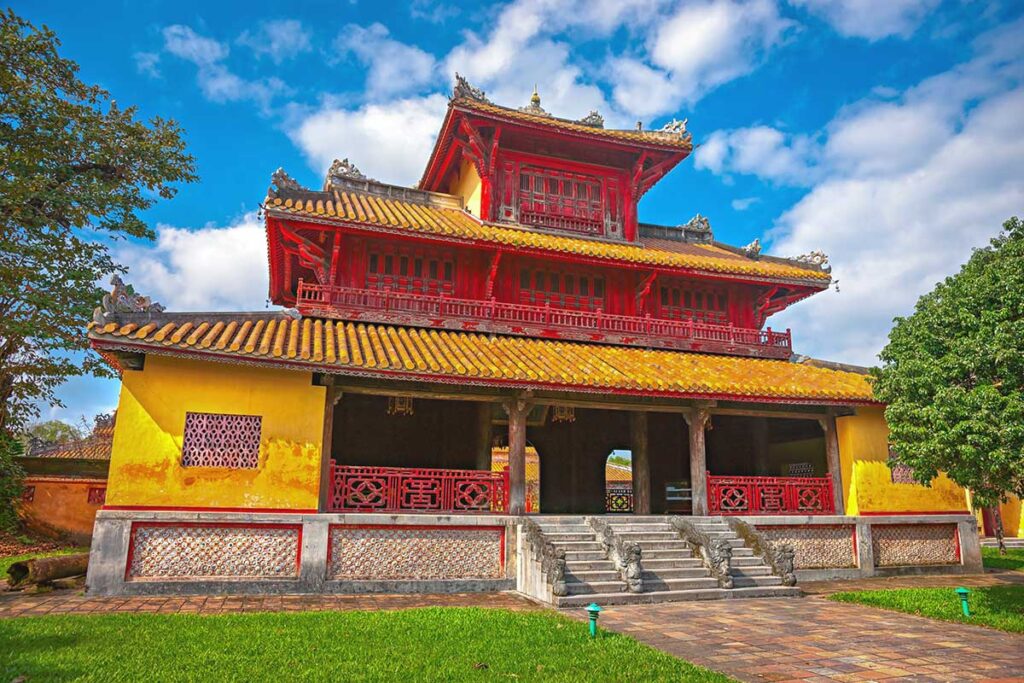
Directly ahead stands the Hien Lam Pavilion, a striking three-tiered wooden structure built to honor the merits and achievements of the Nguyen emperors. It is the tallest building in the entire Imperial City, with carved pillars, gold lacquer details, and dragon motifs representing imperial authority. Entry inside or climbing to upper floors is generally restricted, but its imposing presence is best appreciated from the courtyard.
3. Nine Dynastic Urns
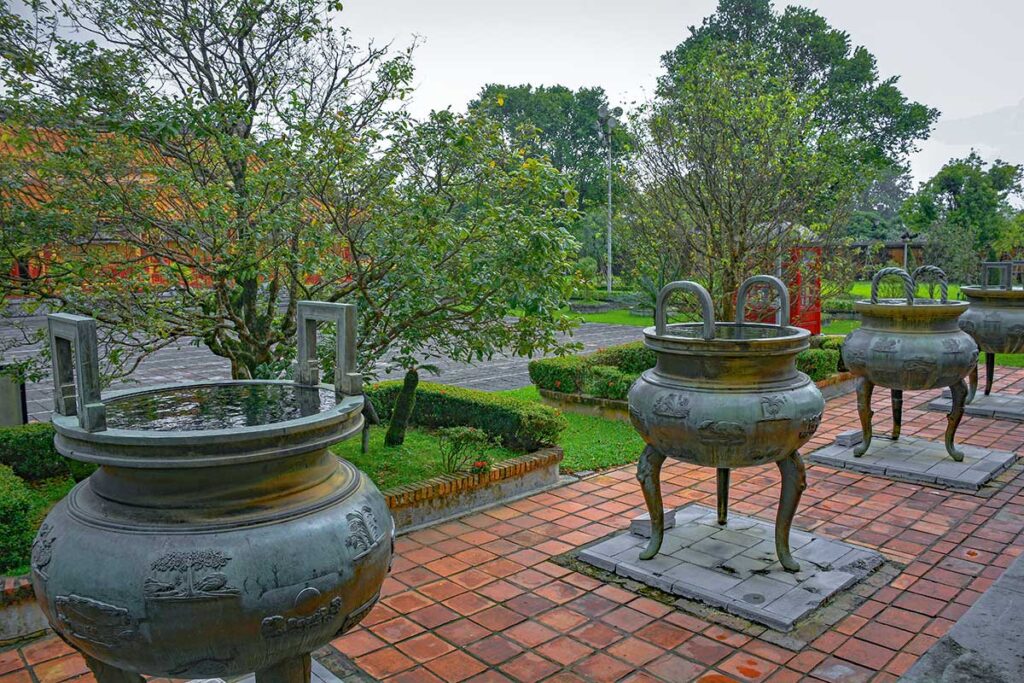
Beyond the pavilion, you’ll come to the Nine Dynastic Urns (Cửu Đỉnh), each dedicated to a specific Nguyen emperor. Cast in bronze between 1835 and 1837, they symbolize the unity and enduring strength of the dynasty. Each urn is adorned with intricate carvings depicting rivers, mountains, animals, and celestial elements — a visual record of Vietnam’s geography and heritage. They remain in their original positions and are considered masterpieces of bronze craftsmanship.
4. The Main Temple (The To Mieu)
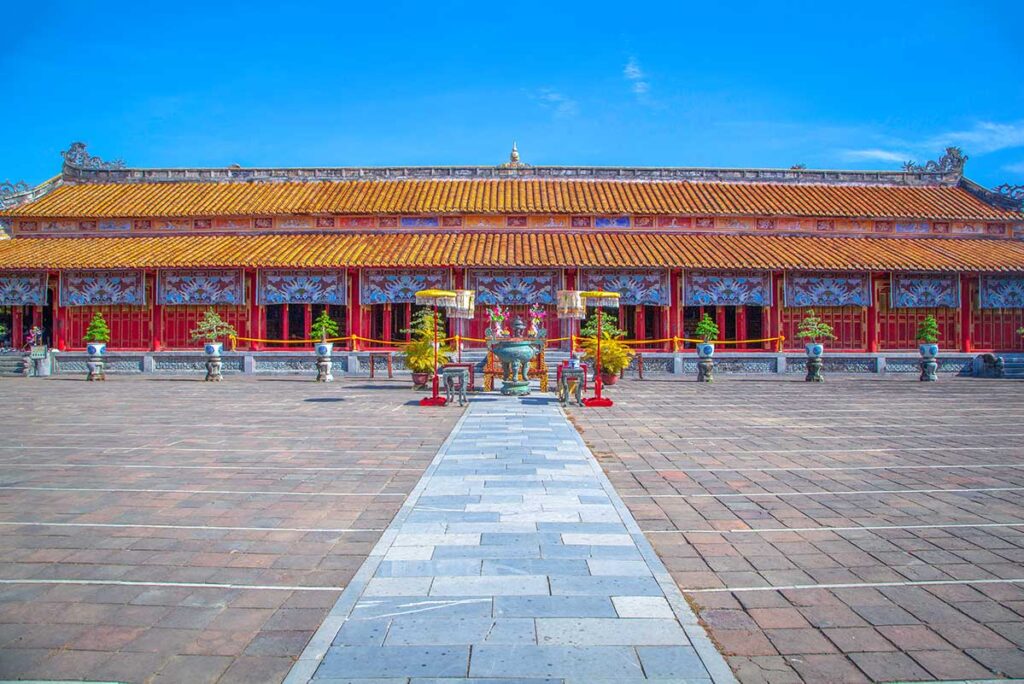
Facing the courtyard and Nine Dynastic Urns is The To Mieu, the heart of the complex and one of the most important ceremonial buildings in Hue. It’s the largest structure here, with a grand front hall leading into a main hall, both built in the double-roofed style typical of Nguyen imperial architecture. Inside, the air feels cooler and quieter, with the scent of incense and the glow of red and gold lacquered woodwork.
The altars are arranged in a strict order, each dedicated to a Nguyen emperor. Originally, only seven emperors were worshipped here — the rule was that an emperor had to die while on the throne and be recognized as legitimate by the royal court. Those who were deposed, abdicated, or spent their final years in exile were excluded. That meant emperors Duc Duc and Hiep Hoa (both deposed after short reigns), Ham Nghi, Thanh Thai, and Duy Tan (all exiled by the French) were left out, along with Bao Dai, the last emperor, who abdicated in 1945.
In 1958, the Nguyen royal family decided to honor three of these — Ham Nghi, Thanh Thai, and Duy Tan — for their patriotism, and moved their ancestral tablets into The To Mieu. This brought the total to ten emperors.
5. Hung To Mieu
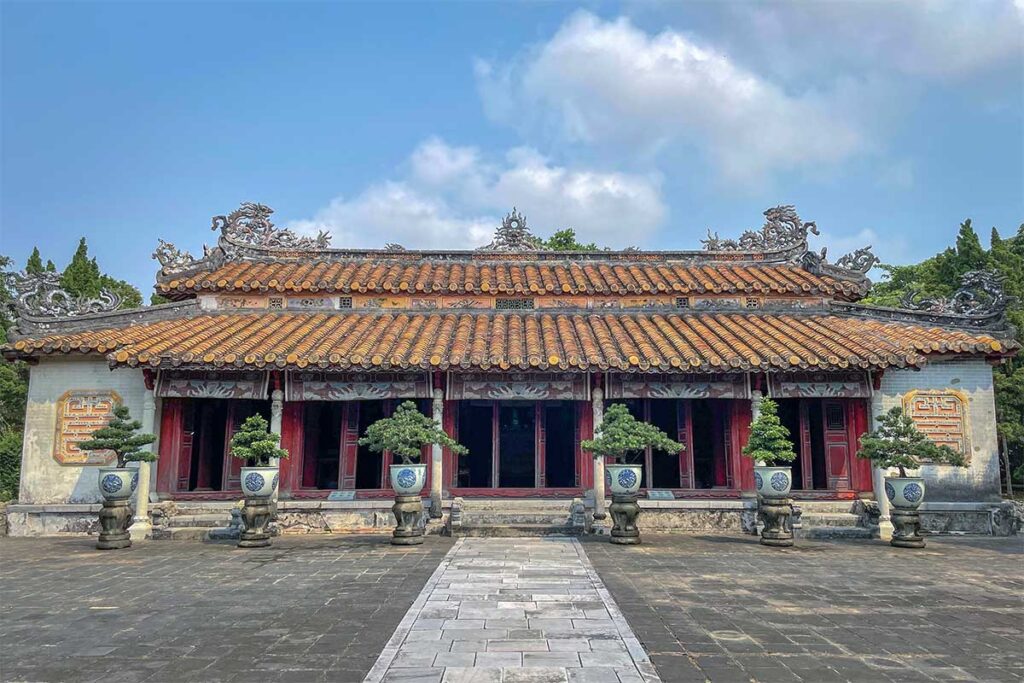
To one side of the main temple lies Hung To Mieu, a smaller shrine dedicated to Gia Long’s parents. Though less elaborate, it has an intimate charm and plays an important role in the complex’s overall story of lineage and respect for family heritage.
Visiting tips & What’s nearby
Tickets & Access
Entry to the To Mieu Temple Complex is included in the standard Hue Imperial City ticket — there’s no separate admission. The main entrance is through Ngo Mon Gate on the south side of the Imperial City. From there, follow the route through Thai Hoa Palace and turn left toward the complex’s southern gate.
Tip: Our full-day Hue tour features the Imperial City, expert guide insights, and convenient transfers between highlights:
Hue Historical City Tour
- Highlights: Hue Imperial City, royal tombs, Perfume River cruise, Dong Ba Market.
- Options: Small-group tour or private tour
Time Needed
If you explore the complex slowly, allowing time to appreciate the architecture and altars, you’ll need around 30–45 minutes. For the entire Imperial City, plan at least half a day, ideally longer if you want to see other major buildings without rushing.
Best time to visit
The most pleasant times are early morning or late afternoon, when the sun is lower and the courtyards are cooler. Morning light is especially good for photographing the gate and pavilion from the south.
Dress Code & Conduct
Wear modest clothing that covers shoulders and knees, as this is a sacred site. Photography is not permitted inside the main temple — take your photos outside before entering. Keep voices low and avoid touching wooden carvings or altars.
Nearby sights in the Imperial City
If you follow the route from Ngo Mon Gate, a logical loop could include the To Mieu Temple Complex first, then continue north and east to Thai Binh Pavilion, the Hue Royal Theatre, and Kien Trung Palace, finishing in the quieter gardens like Co Ha Garden. This path keeps walking distances short and avoids backtracking, letting you see both ceremonial and more relaxed corners of the Imperial City.
